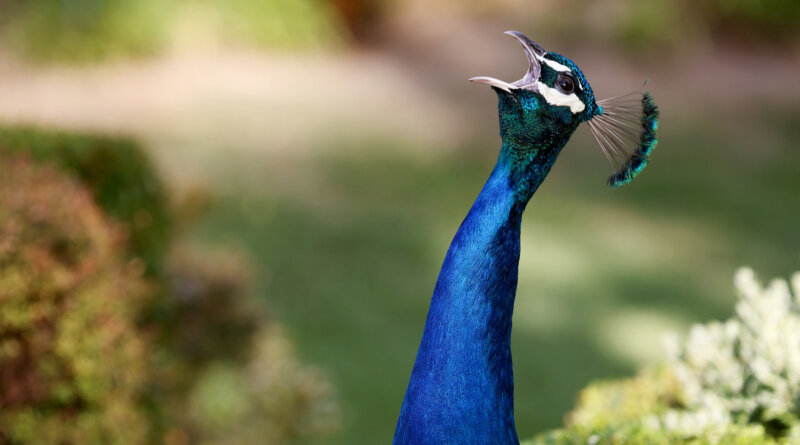Los Angeles County Wants You To Stop Feeding The Feral Peacocks : NPR

A peafowl screams while standing on a resident’s lawn on June 8 in Arcadia, Calif. Peacocks have recently become a nuisance to some residents in the region.
Mario Tama/Getty Images
hide caption
toggle caption
Mario Tama/Getty Images

A peafowl screams while standing on a resident’s lawn on June 8 in Arcadia, Calif. Peacocks have recently become a nuisance to some residents in the region.
Mario Tama/Getty Images
Peacocks: beautiful, majestic, noisy.
And they’re all over some Southern California neighborhoods, where feral peacocks have been a presence for decades.
But some residents have complained about property damage and sleepless nights from an increase in their numbers in the last few years. The animals are said to have piercing screams.
Now Los Angeles County officials are saying: stop feeding them.
“They’ve overpopulated in some areas, to where they became a nuisance to some that didn’t agree with them being there,” says Capt. Cesar Perea, the Society for the Prevention of Cruelty to Animals LA’s director of animal cruelty investigations.
Earlier this month, the LA County Board of Supervisors voted unanimously to ban feeding the peafowl that roam the streets. (Peafowl refers to both females and males, peacocks are technically just males.) Intentionally feeding a peafowl could lead to a fine of $1,000 or up to six months in prison. LA County animal control now has to submit an ordinance for the supervisors’ review. It would be similar to a ban that’s been in place in nearby Arcadia for years.
Supervisor Kathryn Barger sponsored the peacock proposal.
“These efforts are intended to balance the needs of the local community with the peafowl population which has grown considerably over the years,” she said in a statement to NPR.

Los Angeles County officials are saying: stop feeding them.
Mario Tama/Getty Images
hide caption
toggle caption
Mario Tama/Getty Images

Los Angeles County officials are saying: stop feeding them.
Mario Tama/Getty Images
The SPCA’s Perea says the brightly colored birds often peck at their reflections in car windows and destroy gardens and roofs, requiring homeowners to invest in costly repairs.
For peacock lovers, however, the birds are like pets that they can feed, affectionately pet and give witty names to. Perea is one of those people. He says he’s lived with them before and they’ve never bothered him.
Peacocks tend to be afraid of people, unless those people are feeding them. And feeding them means more of them — and ones that are harder to push out.
That’s because peafowl who have an abundant amount of food tend to reproduce more, which in turn makes them more territorial, according to Texas A&M University professor Jessica Yorzinski, who studies feral peacocks in U.S. neighborhoods.
“Once they decide that a certain area is their home, they probably aren’t going to leave unless they’re forced out,” Yorzinski tells Morning Edition.
There have been episodes of violence against peacocks in areas around Los Angeles. At least 50 were killed between 2012 and 2014 in Rolling Hills Estates, some accidentally, but some with pellet guns, shotguns, arrows and poison. In 2019, a man was charged with fatally running over two wild peacocks.
Perea says that while he hasn’t seen an increase in shootings and poisonings in the last couple years, he has received many reports of peacocks being run over.
Perea doubts the new ordinance will prevent peacocks from overrunning the county.
“A law that vague is going to be very difficult to enforce and very difficult to prosecute,” he says.
Instead, he says, they can be humanely trapped and relocated to ranches or sanctuaries.
The unruly birds might calm down for a while before the ban goes into effect, Yorzinski says, because their mating season ends in a month.
Ryan Benk and Steve Mullis produced and edited the audio story.




